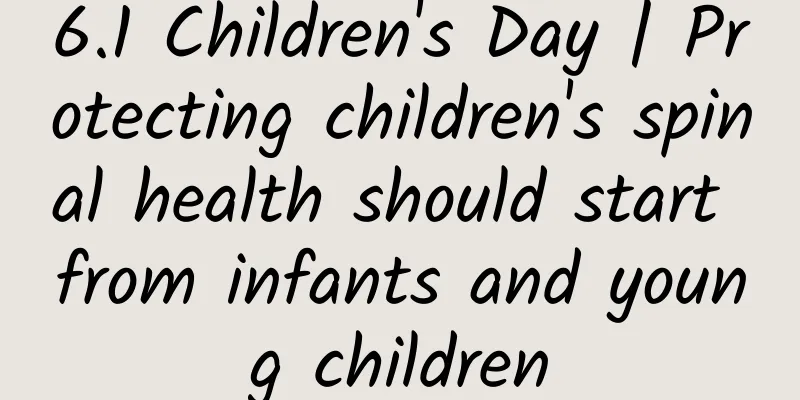6.1 Children's Day | Protecting children's spinal health should start from infants and young children

|
Children are the future of society, and their growth and health are related to the hope of the nation and the future of the country. In particular, children's growth and development are the focus of social and family attention, and children's spinal health issues are of concern to countless parents. The spine is the pillar of life. As children grow, parents may have some doubts about whether their spine is straight or curved. In fact, when viewed from the front, a healthy spine is straight (the sideways curvature of the spine is called scoliosis). When viewed from the side, a mature spine has four distinct curvatures. Among them, the curvature of the thoracic and cervical spine is kyphotic, and the curvature of the cervical and lumbar spine is lordotic. From the moment a child is born, the physiological lateral curvature of his or her spine begins a development process. The spine of a newborn infant has no curvature, only a slight kyphosis. As the child grows older and his motor development matures, various physiological curvatures gradually appear. These natural curvatures of the spine are generally fixed by ligaments when the child is 6 to 7 years old. The specific situation is as follows: The first physiological curve: appears around 3 months When a baby is born, the spine is very flexible, with almost no curvature and is completely straight. It is not until about 3 months after birth that the baby begins to lift his head and other movements, which strengthens the neck and back muscles and begins to form the first curvature of the spine - cervical lordosis. Therefore, babies under 3 months old can only be held upright occasionally, and their heads and legs must be fully supported while being held. After 3 months, you can hold your baby upright appropriately without overly protecting his head. Second physiological curve: about 6 months 6 months of age: The second curvature of the spine forms: thoracic kyphosis. It is not recommended for babies under 6 months old to sit alone if they lack safe support and parental care; after 6 months, the baby can sit alone, but you must pay attention to safety. The third physiological curve: about 1 year old 9-12 months: While learning to walk, the spine forms the third curvature: lumbar lordosis. The bones and muscles of the lower limbs and back of a 9-month-old baby are fully developed, and the third physiological curvature appears around the age of 1. The baby begins to learn to walk and forms lumbar lordosis. It can effectively support the weight of its own body, so parents can start training their children to stand and walk with support. Protecting the spine starts from the moment the child is born. Parents should be aware of the following behaviors that can harm the baby's spine: 1. Holding your baby upright too early The spine and cervical vertebrae of babies under 3 months old are very soft. Holding them in an upright position will increase the pressure on the baby's spine, which can easily cause damage to the cervical vertebrae and abnormal curvature of the spine, eventually leading to deformity. Note: Babies during the confinement period must be held horizontally, and the baby's head and neck must be supported. 2. Put your baby in a stroller too early Some parents let their children sit in strollers when they are less than two or three months old. If this continues for a long time, the bones and back muscles of babies under 6 months old are still very weak and cannot support the weight of the body. In the long run, not only may they have hunchbacks or scoliosis, but the development of internal organs will also be affected. 3. Let your baby sit up too early The growth and development of babies follows certain rules: "roll over at three, sit at six, crawl at eight..." Because sitting posture places great demands on the spine. At 6 months, the baby's spine is developed to the corresponding state and is strong enough to bear the weight of the body. If you let your baby sit too early, the spine will become fragile and affect its development, or even become bent and deformed. 4. Cross your legs This is a common action among children after they go to school – crossing their legs. In the long run, this will cause the body to sit crookedly and affect the development of the spine. Summarize In addition to the common problems mentioned above, parents need to pay attention to whether their children have congenital spinal problems and spinal bone deformities caused by vitamin D deficiency rickets. The health of the spine is not only related to the child's daily life, but also determines the child's future life. Protecting the health of the spine during childhood, timely detection, early diagnosis and early treatment can give every child a healthier future! |
<<: T cells found in cornea for the first time! Protect eyes from viral infection
>>: One picture to understand | Damaging the environment: a new reason to quit smoking
Recommend
What is the reason for low amniotic fluid?
If there is too much amniotic fluid, you should p...
Lower abdominal pain and excessive vaginal discharge
Women often experience lower abdominal pain, espe...
Lower abdomen pain after sex
Lower abdominal pain is a common symptom in women...
What is the Sri Lanka travel guide? Which attractions in Sri Lanka are most worth visiting?
The recent period is the last period of the year ...
Symptoms of trichomoniasis are more obvious in women
Symptoms of trichomoniasis are some symptoms that...
How much does it cost to do an amniocentesis?
Amniocentesis is one of the more expensive tests ...
How to wash grapes? What are the taboos of eating grapes?
Grapes are a daily fruit that is not only deliciou...
How to treat labia itching
In life, due to the particularity of women's ...
Symptoms and manifestations of postpartum depression
Postpartum depression is a more common type of me...
After learning this secret, my ten-year-long rhinitis was cured instantly!
【appendix】 1. First of all, I would like to state...
What is the difference between mechanical products and electronic products? What are the main types of electronic products?
What is the difference between mechanical product...
Can I get pregnant if I have trichomoniasis?
Trichomonas may parasitize in women's urethra...
What to do if your vagina is dry
Women cannot have sex when they have vaginal dryn...
Is it okay to get pregnant again after a miscarriage?
Curettage and dilation is a very common abortion ...









